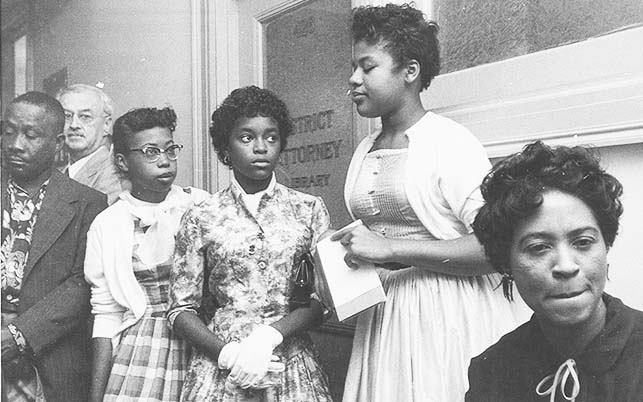UA Little Rock completes digitization of history of segregation, integration of Arkansas schools
December 10-16, 2018
By Tracy Courage
The University of Arkansas at Little Rock’s Center for Arkansas History and Culture (CAHC) has completed work on a $106,908 grant to digitize materials related to the history of segregation and integration of Arkansas’s educational system. The award was part of the Digitizing Hidden Collections and Archives initiative sponsored by the Council on Library and Information Resources (CLIR) and funded by the Andrew W. Mellon Foundation.
This two-and-a-half year project brought together CAHC, the Central Arkansas Library System’s Butler Center for Arkansas Studies, and the Little Rock Central High School National Historic Site to create a rare collection of materials, housed in three different archives, yet digitally available in a single location.
As a result of this project, a unique group of archival collections are now easily accessible online to students and scholars of civil rights, race, education, and the law, as well as the general public. Anyone around the world now has the opportunity to study the evolution of education in Central Arkansas through the lens of religion, the judicial system, and contemporary students and educators.
In addition to the more than 350,000 digital files now available online, CAHC has also published a virtual exhibit featuring digital objects from the project along with a timeline, lesson plans, and short essays by scholars.
“Understanding the multiple dimensions of segregation and integration in Arkansas is greatly enhanced as a result of the grant-funded work completed by UA Little Rock archivists and students,” said Deborah Baldwin, associate provost of the Center for Arkansas History and Culture.
Despite the creation of digital files, each repository will continue to retain the originals in perpetuity.
Collections digitized as part of the project include the following:
The National Dunbar Alumni Association Historical Collection contains materials pertaining to Dunbar High School, Little Rock’s high school for black students before integration. This collection originated from a joint effort of the National Dunbar Alumni Association and UA Little Rock.
The FBI: Little Rock School Crisis Report was received by UA Little Rock in 1981 through FOIA requests. Judge Ronald Davies requested the U.S. Attorney authorize an FBI investigation after receiving information the National Guard had turned away nine African American students who had attempted to attend classes at Central High School in September 1957.
Robert Brown, Bishop of the Episcopal Diocese of Arkansas during the Central High integration crisis, spoke out against Gov. Orval Faubus’s handling of the school crisis. Included in Brown’s papers are letters both supporting and criticizing his position.
Elizabeth Huckaby taught English at Central High School for more than 40 years. She kept a journal during the integration crisis and published a book that was later made into a film.
Federal Judge Harry Lemley’s 1958 ruling in the case Aaron v. Cooper temporarily halted the integration of Little Rock’s Central High School. His papers contain a scrapbook and correspondence detailing his role in the desegregation crisis.
Little Rock Central High School National Historic Site houses material related to the Little Rock Nine, Women’s Emergency Committee, the organization of the Central High Museum prior to its affiliation with the National Park Service, and oral histories.
The Office of Desegregation Monitoring (ODM) is a federal office resulting from a Pulaski County school desegregation case (filed Nov. 30, 1982) and charged with monitoring and assisting efforts of three school districts to meet desegregation obligations and mandates. ODM records include documents, court filings and exhibits, and correspondence, maps, school profiles, and reports concerning compliances, operations, and policies.
Source: UA Little Rock Communications
PHOTO CAPTION:
The photo (included in the digital archive) shows Daisy Bates looking off from the camera as she and members of the Little Rock Nine wait outside of a door marked “District Attorney Library.” (Photo courtesy of Little Rock Central High School National Historic Site)



